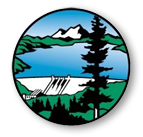Cooperative Extension Shasta County
1851 Hartnell Avenue
Redding, CA 96002-2217
Phone: (530) 224-4900
Fax: (530) 224-4904
Director:
Larry Forero
Fire Recovery Resources
Reducing Risks from Wildfire Workshop - Presentations
CARR FIRE RECOVERY INFORMATION
Wildfires are challenging times. As first responders achieve containment of the active fire front, landscape and building recovery efforts are critical next steps. Shasta County has compiled a comprehensive resource to help residents and landowners through your fire recovery needs.
In addition to recouping losses and establishing personal safety, the coming months are critical protecting your landscape from secondary damage. Tree damage assessment, ground stabilization, and home landscaping design are critical factors to consider before the rainy season. Refer to the resources provided above, or contact your local UCCE office for guidance on which steps to consider in maintaining our natural landscapes.
During active wildfire times, please work with your local fire agency and follow all evacuation orders to help fire crews protect our community. Do not rely solely on emergency services, as damaged infrastructure can stop alert messages from getting to you.
There are several sources of information, so please ensure that you are using verified sources:
- Shelter Locations: CalFire Incident Information Page
- Mobile App Alerts: Install RedAlert, CodeRED, and NIXLE on your mobile device to have emergency evacuation notices sent directly to your phone.
- Evacuation Orders: Live Fire Page from local KRCR news station
- Social Media: CalFire SHU is providing real-time updates on the fire throughout the day
Given the unpredictability of this fire, all residents should prepare for evacuation. Use the checklist below to prioritize your evacuation based on time available. Some insurance providers include evacuation coverage as part of their policy. Save receipts for motels and other expenses to help with your recovery.
* Guide adapted from Nevada County, (2019) Fire Season Guide
Securing yourself and your family
- Follow these guidelines from the U.S. Fire Administration / Federal Emergency Management Agency on what to do during the first 24 hours after a fire:
- Contact your local relief service such as the American Red Cross (search by zip code to find your local chapter here) or the Salvation Army (search by zip code to find your local chapter here) to help with housing, food, and other essentials.
- Contact your insurance company/agent for details on how to proceed. If you are not insured, try contacting private aid organizations such as the American Red Cross, the Salvation Army, religious organizations, and civic organizations.
Re-entering the home/site
- Check with the fire department to ensure that it is safe to re-enter and ask about the status of your utilities (if they are down, do NOT attempt to reconnect yourself). Fire status and current evacuation orders in place can be found by going to the National Interagency Fire Center Fire Information page.
- Conduct an inventory - do not throw anything away until after the inventory is made. A guide to valuing your property and a guide to salvaging specifc items can be found here.
- Locate valuable documents and records if you were unable to gather them before leaving. A guide to replacing lost documents can be found here.
- Save all receipts for any money spent related to fire losses - they may be needed by your insurance company.
- Notify your mortgage company of the fire.
- Check with the IRS about tax-related benefits for fire recovery.
Revegetating the site
- There are many guides for assessing fire damagetovegetationandrevegetating available on the web. Some that we recommend include:
- Burned Oaks: Which Ones Will Survive? UC Cooperative Extension Publication
- After Wildfire Montana State University Cooperative Extension
- Wildfire Recovery Oregon State University Extension Service
- Burned Oaks: Which Ones Will Survive? UC Cooperative Extension Publication
- The National Resource Conservation Association also offers technical assistance for replanting and erosion control.
Information sourced from UCCE Sierra: Living With Wildfire
Additional Resources
- Recovering from Wildfire: A Guide for California's Forest Land Owners - What should I do now?
- Master Gardener Tree_Mortality Recovery
- Fire Information Toolkit
- Sustainable & Fire safe Landscapes
-
Article on reforestation of the 1992 Fountain Fire: FountainFireReforestationJofF122008
-
Article on herbicide effect on plant biodiversity in a plantation: FountainFireHerbicideStudyDiTomaso
Fire Safe Home
UC Homeowner Wildfire Assessment
Home Survival in Wildfire-Prone Areas: Building Materials and Design
Fire Resistant Home Construction
Builders Wildfire Mitigation Guide
Defensible Space
Creating defensible space is essential to improve your home's chance of surviving a wildfire. It's the buffer you create between a building on your property and the grass, trees, shrubs or any wildland area that surround it. This space is needed to slow or stop the spread of wildfire and it protects your home from catching fire - either from direct flame contact or radiant heat. Defensible space is also important for the protection of the firefighters defending your home.

